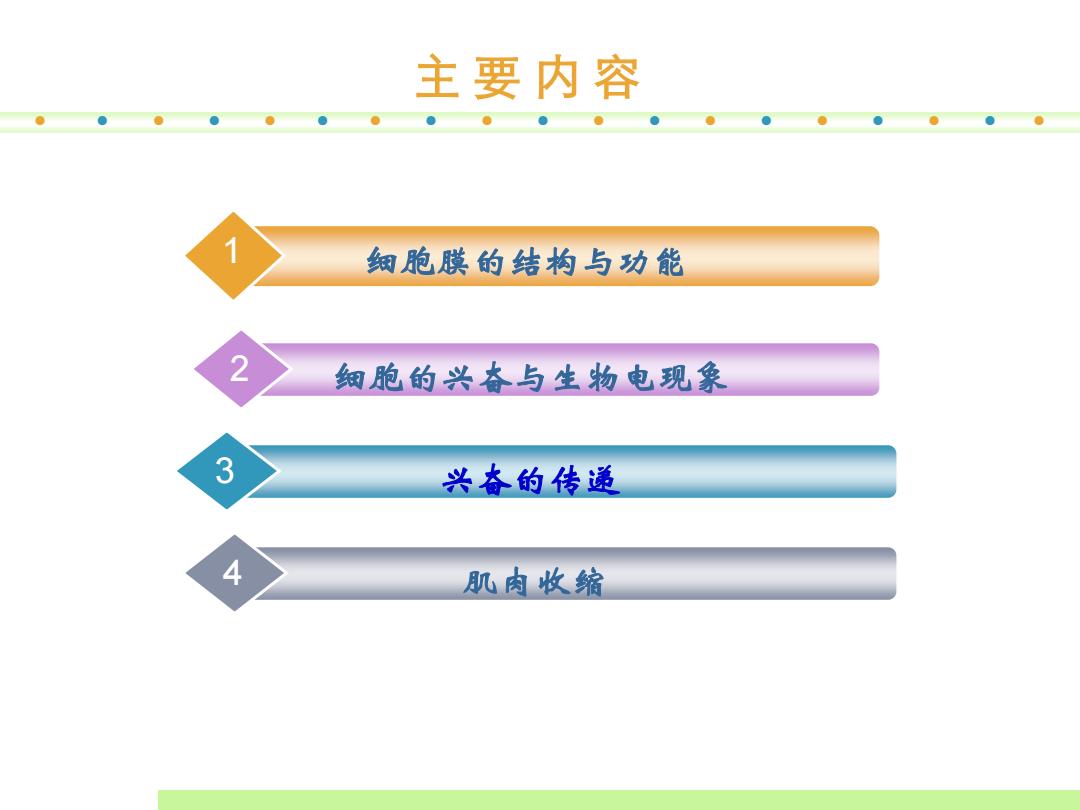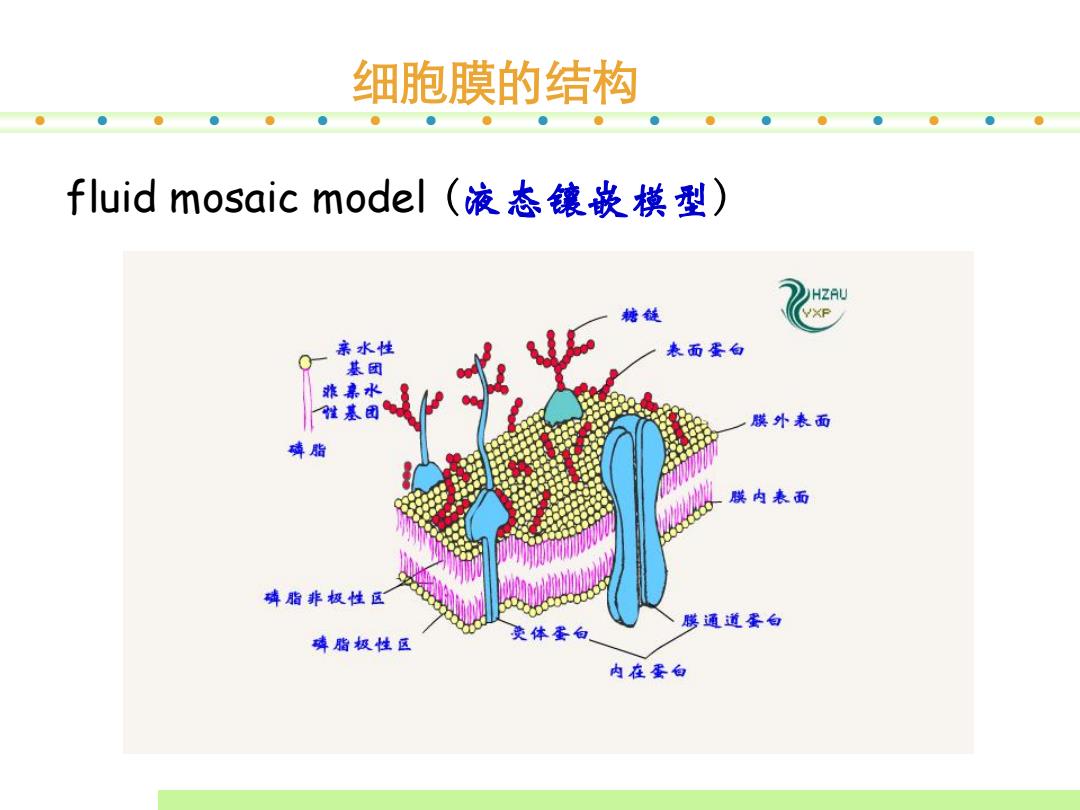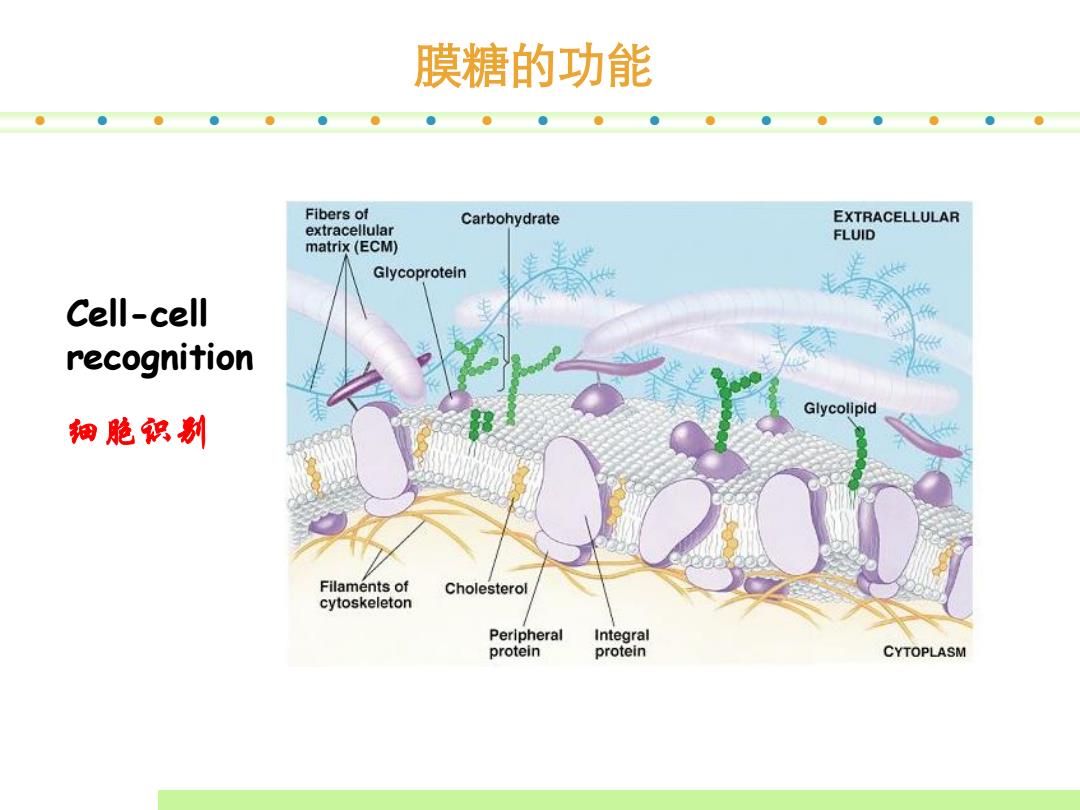
第二章细胞生理 Centrioles Cell Membrane Lysosome Smooth E.R Golgi Body Nucleus Mitochondrion Rough E.R. Chloroplast Ribosome
第二章 细胞生理

主要内容 细胞膜的结构与功能 细胞的兴奇与生物电现象 3 兴春的传递 4 肌肉收缩
1 细胞膜的结构与功能 2 细胞的兴奋与生物电现象 3 兴奋的传递 4 肌肉收缩 主 要 内 容

细胞膜的结构 fluid mosaic model(液态镶嵌模型) HZAU 糖链 YXP 亲水性 表面蛋白 基团 水 基团 熊外表面 磷脂 膜内表面 磷脂非极性区 膳通道蛋白 磷脂极性区 荧体蛋向 内在蛋白
细胞膜的结构 fluid mosaic model (液态镶嵌模型)

膜蛋白的功能 Transport (a)A protein that spans the membrane may provide a hydrophillc channel across the membrane that is selective for a particular solute.(b)Some transport proteins hydrolyze ATP as an energy source to actively pump substances across the membrane. Signal transduction A membrane protein may have a binding site with a specific shape that fits the shape of a chemical messenger,such as a hormone.The external messenger(signal)may cause a conformational change in the protein that relays the message to the inslde of the cell. Adhesion Some ghycoproteins attach to the cytoskeleton and extracellular matrix. Cell-cell recognition Some glycoproteins(proteins with short chains of sugars)serve as identification tags that are specifically recognized by other cells
膜蛋白的功能

膜糖的功能 Fibers of Carbohydrate EXTRACELLULAR extracellular FLUID matrix (ECM) Glycoprotein Cell-cell 板 recognition Glycolipid 细胞积制 Filaments of Cholesterol cytoskeleton Peripheral Integral protein protein CYTOPLASM
膜糖的功能 Cell-cell recognition 细胞识别